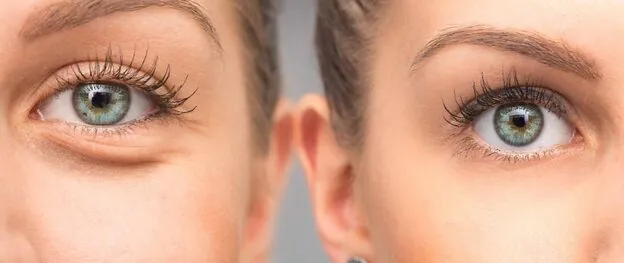
Understanding the Medical Imperatives of Blepharoplasty
Blepharoplasty, commonly known as eyelid surgery, is a cosmetic surgical procedure aimed at improving the appearance of the eyelids. It involves removing excess skin, fat, and muscle ..............
Blepharoplasty, commonly known as eyelid surgery, is a cosmetic surgical procedure aimed at improving the appearance of the eyelids. It involves removing excess skin, fat, and muscle from the upper and lower eyelids to rejuvenate and enhance the overall appearance of the eyes. While blepharoplasty is predominantly sought after for aesthetic purposes, there are instances where it becomes medically necessary. This article explores when and why blepharoplasty is considered medically necessary, the conditions it can address, and the importance of careful consideration before opting for this surgical intervention.
Understanding Blepharoplasty
Before delving into the medical necessity of blepharoplasty, it's crucial to comprehend the procedure itself. Blepharoplasty is a surgical procedure that primarily addresses aesthetic concerns related to the eyelids, such as sagging, puffiness, and excess skin. It can be performed on either the upper eyelids, lower eyelids, or both, depending on the individual's specific needs and desired outcomes.
The typical goals of blepharoplasty include:
- Removing excess skin and fat from the eyelids.
- Tightening the muscles surrounding the eyes.
- Reducing under-eye bags and puffiness.
- Enhancing the overall contour of the eyes for a more youthful appearance.
The procedure involves making incisions along the natural creases of the eyelids to minimize visible scarring. Through these incisions, the surgeon removes or repositions excess tissue and then closes the incisions with sutures.
When is Blepharoplasty Considered Medically Necessary?
While blepharoplasty is primarily seen as a cosmetic procedure, there are cases where it is deemed medically necessary. Medical necessity in the context of blepharoplasty typically relates to conditions that affect vision or cause functional impairment. Let's explore some scenarios where blepharoplasty may be considered medically necessary:
1. Functional Impairment due to Eyelid Ptosis:
Eyelid ptosis, characterized by drooping of the upper eyelid(s), can sometimes be severe enough to obstruct the visual field. In such cases, the sagging eyelids may hinder an individual's ability to see clearly, impacting daily activities like reading, driving, or even basic tasks. Blepharoplasty can be deemed medically necessary to correct severe eyelid ptosis and restore a functional field of vision.
2. Periorbital Edema or Fluid Accumulation:
Chronic periorbital edema, which refers to the persistent accumulation of fluid in the eyelids, can cause discomfort and obstruct vision. Individuals experiencing persistent swelling or edema around the eyes might opt for blepharoplasty to reduce the swelling and improve their visual function.
3. Excessive Upper Eyelid Skin Affecting Vision:
Excess skin on the upper eyelids can sometimes sag to a point where it interferes with vision, especially in the upper field. This excess skin may weigh down the eyelids, obstructing sightlines and making it challenging to see clearly. In such cases, removing the surplus skin through blepharoplasty can enhance vision and quality of life.
4. Corrections Post-Trauma or Injury:
Individuals who have suffered traumatic injuries to the eyelids, resulting in disfigurement or functional impairment, may require blepharoplasty for both aesthetic and functional restoration. Repairing the damaged eyelids can help in the proper functioning of the eyelids and improve overall appearance.
5. Management of Dermatochalasis:
Dermatochalasis is a condition characterized by excessive skin in the eyelids, often a result of aging. In severe cases, this condition can impact vision due to the sagging skin obstructing the line of sight. In such situations, blepharoplasty may be considered medically necessary to alleviate the vision impairment caused by dermatochalasis.
The Importance of Medical Evaluation and Consultation
Determining the medical necessity of blepharoplasty involves a comprehensive evaluation by a qualified healthcare professional, typically an ophthalmologist or plastic surgeon. During the evaluation, several factors are taken into account, including the individual's medical history, visual acuity, extent of functional impairment, and the potential benefits and risks of the surgical procedure.
It's crucial for individuals considering blepharoplasty to undergo a thorough examination and consultation with a medical professional. The decision to undergo surgery should be a well-informed one, weighing the potential benefits in terms of both functional improvement and aesthetic enhancement against the risks and costs associated with the procedure.
Risks and Complications of Blepharoplasty
Like any surgical procedure, blepharoplasty carries inherent risks and potential complications. It's crucial for individuals considering this surgery, whether for medical or cosmetic reasons, to understand these risks and weigh them against the benefits. Here are some common risks and complications associated with blepharoplasty:
1. Bleeding and Hematoma:
Bleeding during or after the surgery is a potential risk. In some cases, blood can accumulate under the skin, forming a hematoma. This may necessitate additional surgery to drain the blood and prevent complications.
2. Infection:
Any surgical procedure carries a risk of infection. To mitigate this risk, patients are typically prescribed antibiotics before and after surgery.
3. Scarring:
While efforts are made to minimize visible scarring, some scarring is inevitable. The severity and visibility of scars can vary based on factors like genetics, skin type, and how well the individual heals.
4. Pain and Discomfort:
Post-operative pain and discomfort are common, usually managed with prescribed pain medications. Swelling and bruising may also occur and subside gradually.
5. Dry Eyes:
Temporary or sometimes permanent dry eyes can occur after blepharoplasty due to changes in tear production. Artificial tears and other measures may be recommended to manage this.
6. Changes in Sensation:
Altered or reduced sensation in the eyelids or surrounding areas may occur temporarily or, in rare cases, persistently. This typically improves over time.
7. Difficulty Closing Eyes Completely:
In some cases, individuals may experience challenges in fully closing their eyes, particularly during sleep. This issue is usually temporary but may require further treatment if persistent.
8. Ectropion and Entropion:
Ectropion involves the outward turning of the eyelid, while entropion is the inward turning. These conditions can cause irritation, tearing, and discomfort. Additional surgery may be required to correct these complications.
9. Unsatisfactory Aesthetic Results:
There's always a possibility that the desired aesthetic outcome is not achieved. It's important for individuals to have realistic expectations and communicate their goals clearly with their surgeon.
Final Thoughts
Blepharoplasty is a surgical procedure primarily sought after for its cosmetic benefits, enhancing the appearance of the eyelids and rejuvenating the eyes. However, in specific cases where eyelid conditions impede vision and cause functional impairment, blepharoplasty can be considered medically necessary. Conditions such as eyelid ptosis, periorbital edema, excessive upper eyelid skin affecting vision, traumatic injuries, and dermatochalasis may warrant blepharoplasty to improve visual function and overall quality of life.
It is essential for individuals considering blepharoplasty for medical reasons to consult with a qualified healthcare professional who can assess their condition, recommend appropriate treatment options, and guide them through the decision-making process. Making an informed decision based on a thorough evaluation is key to achieving the desired functional and aesthetic outcomes from blepharoplasty.


Comments
Login & Write comment